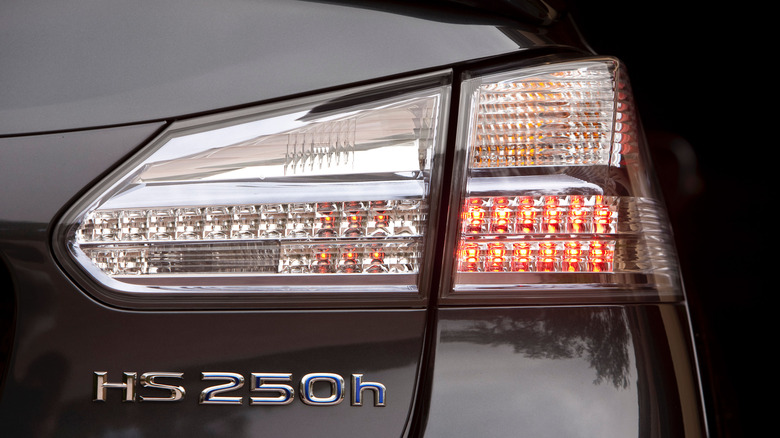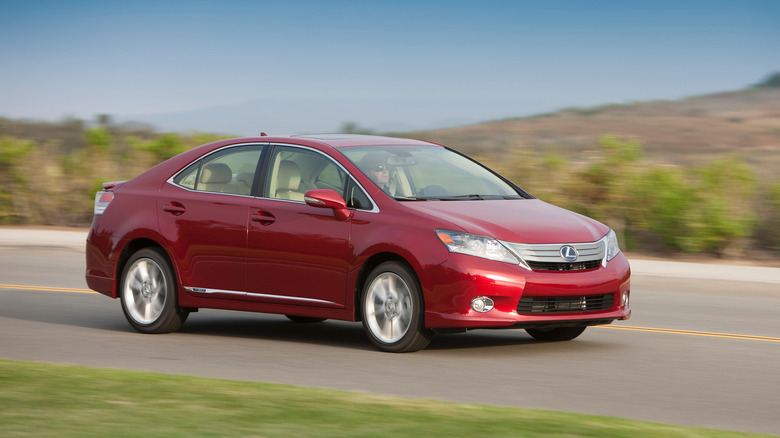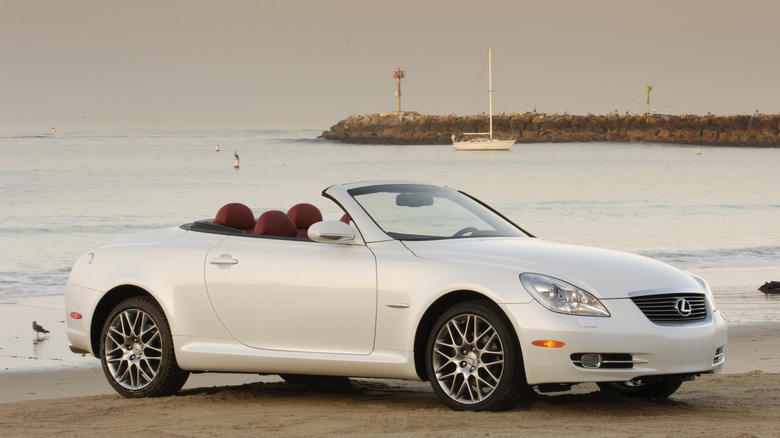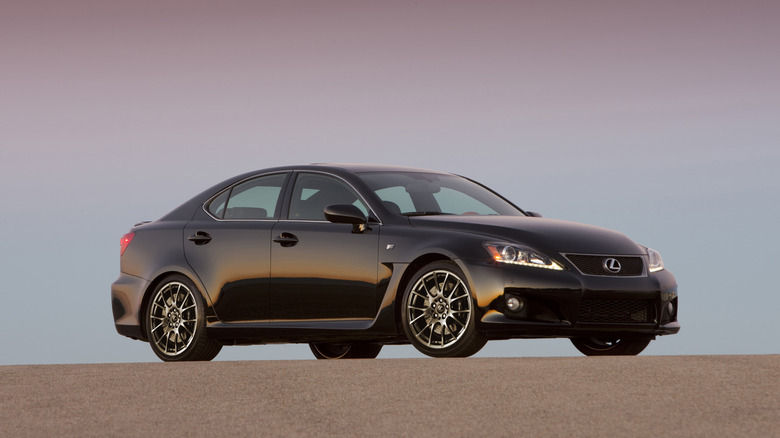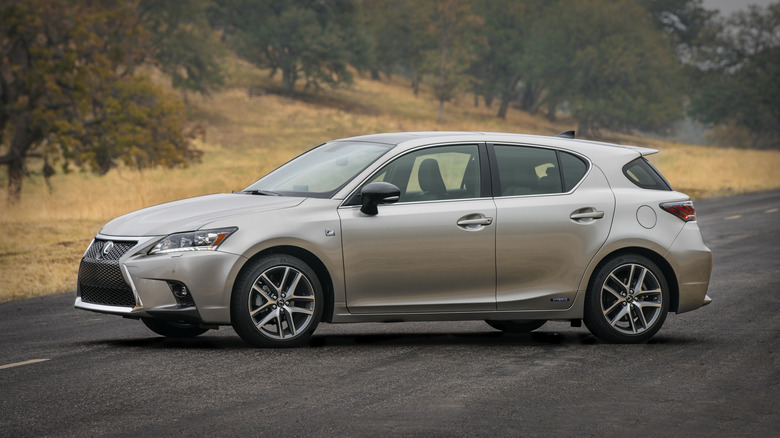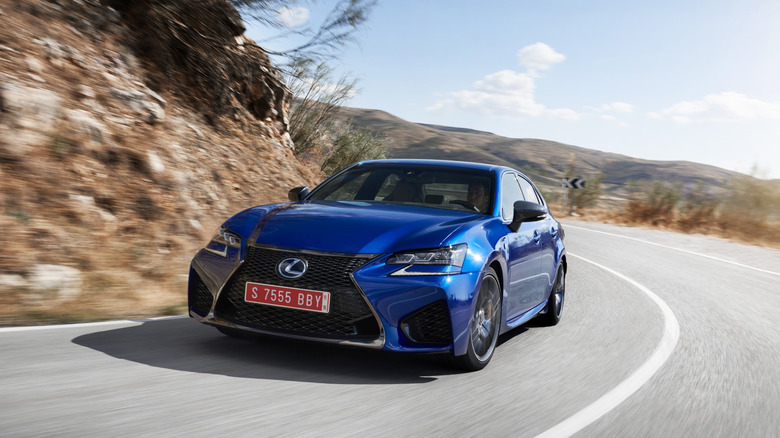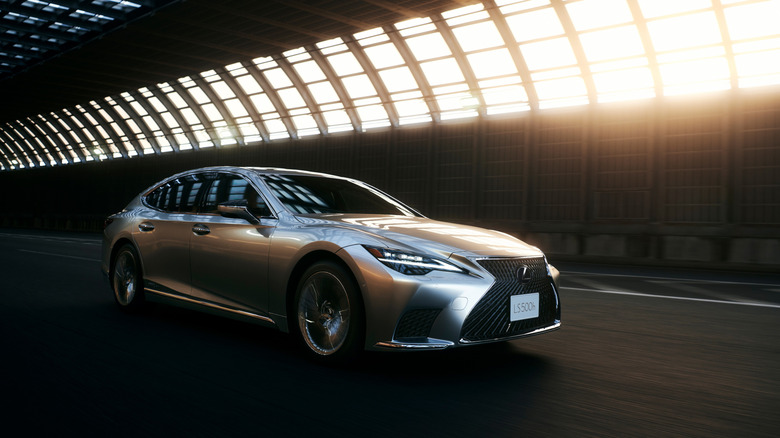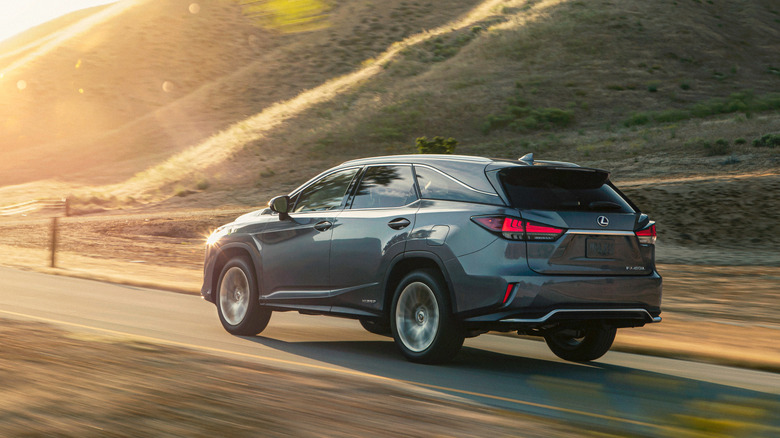The 7 Most Unsuccessful Lexus Vehicles Ever Sold
Lexus is one of the youngest luxury automakers around, yet it sold more cars than Audi in 2024. Hardly surprising, as Toyota's luxury division began pushing engineering and quality boundaries when it launched its first car, the LS, in 1989, and continued with revolutionary models including the world's first luxury crossover, the RX 300, in 1998. The automaker is also behind other super-successful models, like the ES, NX, and GX.
However, like every other automaker, Lexus' model launches haven't always been smooth sailing. The company's made quite a few miscalculations during its 36-year history, launching models that really missed the mark. In most cases, the cars were fine, but buyers simply weren't interested in them. In others, Lexus launched models that weren't simply appropriate for its badge. In this piece, we'll have a closer look at the seven most unsuccessful Lexus vehicles, each with its own story and reason for failure. Get ready, because some of the cars listed here might surprise you!
Lexus HS 250h (2009-2012)
Flying high on its success with the Prius, Toyota decided to launch a more luxurious hybrid under the Lexus badge to appeal to deep-pocketed buyers. After all, huge celebrities like Jessica Alba, Natalie Portman, and Leonardo DiCaprio drove a Prius. The result was one of Lexus' dullest vehicles ever — the HS 250h.
On paper, Lexus' Prius had a lot going for it. Instead of the 1.8-liter hybrid powertrain in the Prius, the HS 250h received a larger 2.4-liter unit with 187 hp. 0-60 took okay-ish 8.4 seconds. Fuel economy: 35 mpg. Reviewers even praised the driving experience, saying it had all the Lexus hallmarks, like a smooth, isolated ride. The interior was also a huge upgrade over the Prius, with much better materials. Nobody bought it, though.
Lexus sold 6,699 units during the first (incomplete) year of sales in the U.S., rising to 10,663 in 2010. Sales fell off a cliff after that, with Lexus shipping just 2,864 units in 2011. In 2012, the HS 250h found only 799 new homes. The tedious design surely played a part; next to the second-gen IS 350, the HS 250h just looked bland — Like a Corolla with bad plastic surgery.
Still, the HS 250h had to deal with other issues. For instance, the ES 300h launched in 2012 with better, well, everything. Lexus' German rivals offered diesel-powered machines that offered more performance and drove better. So, somewhat predictably, the HS 250h is one of the rarest Lexus vehicles in the U.S.
Lexus SC 430 (2001-2010)
The SC 430 is one of the most polarizing cars in recent history. Jeremy Clarkson called it the worst car ever made. Other reviewers couldn't praise it enough. Owners loved it. From today's perspective, it looks kind of cool. The timeless, organic design, inspired by high-end Yachts, still catches the eye.
Whatever your opinion is on the second-gen SC, the model unfortunately never sold well. Lexus sold over 1,000 units in 2002 in the U.S.; all other model years, the sales had only three digits attached to them. This forced Lexus to discontinue the SC entirely, replacing it with the RC and LC coupes.
There are a few reasons for the demise of the SC 430. Although it was launched to compete with sporty offerings from Germany, like the Mercedes-Benz SL-Class, the SC 430 was never a performance car. Yes, its 4.3-liter V8 had enough oomph, packing 288 hp and 317 lb-ft of torque. It powered the correct (rear) wheels, too, through a six-speed auto. 0-60: 5.8 seconds. Still, Lexus' V8 was an exercise in refinement, without the exciting noise you'd expect from such a vehicle. That's a shame, because it has one of the sleekest interiors this millennium.
More than anything, though, convertibles were already out of favor during the 2000s. Perhaps there were too many of them, but it's probably SUVs and crossovers that killed them, along with most other body styles. Maybe the SC 430 would've worked better as a performance-oriented coupe.
Lexus IS F (2007-2014)
Before the IS F arrived on the scene, Lexus' cars were viewed as smooth-riding luxury yachts, including enthusiast models like the SC 430. Still, the Japanese automaker wanted to attract younger customers, and chose to tune the second-gen IS sedan as its first true performance effort. 5.0-liter naturally aspirated V8. 416 hp at 6,600 rpm. Quick-shifting eight-speed auto. 0-60 sprint of 4.6 seconds. Top speed: 170 mph. A special performance-tuned suspension, aided by an advanced Vehicle Dynamics Integrated Management (VDIM). On paper, the IS F had all the hallmarks of a true performance sedan, and enough arsenal to go head-to-head with the BMW M3 and Mercedes-Benz C63 AMG.
Colleague Chris Davies also praised the Lexus IS F in 2014. He loved the engine sound, particularly above 3,600 rpm. The eight-speed auto also earned recognition for the fast, engaging shifting action. Even with that much power going to the rear axle, the IS F also showed humility and stability on the track. So, why was it discontinued with no direct replacement? Well, Lexus sold only 11,000 units overall during its seven-year market run. Meanwhile, BMW sold over 66,000 E92 M3s during a six-year production run — one of the lowest sales figures of any M3.
Maybe buyers weren't ready for a Japanese performance sedan, or maybe they thought it was an inferior product (it wasn't). These days, the IS F is a great second-hand buy, with incredibly reliable mechanics. Heck, its 2GR-GSE V8 is one of the most reliable Lexus engines ever built!
Lexus CT 200h (2011-2020)
The Germans have long been offering premium compact hatchbacks in Europe. Mercedes-Benz attracted families with the minivan-like A-Class. BMW went the enthusiast route with the rear-wheel-drive 1-Series. Audi had a premium take on the VW Golf with the A3. Lexus, of course, wanted a piece of the cake, launching the CT 200h in Europe and North America in 2011. Its differentiating factor — the hybrid powertrain.
Like the Audi A3, the CT 200h utilized the same MC platform as Toyota's compact offering at the time, the Auris. Same wheelbase. Same 1.8-liter hybrid powertrain. Of course, Lexus also did its due diligence and upgraded the interior with better materials, fit, and finish. The CT 200h also had more sound insulation, resulting in a quieter ride.
As you'd expect, the 134-hp hybrid was fantastic for fuel economy, with an EPA city rating of 43 mpg. Thanks to the taut suspension, it handled corners well, but the CT 200h was never quick — it sprinted to 60 mph in a leisurely 10.5 seconds. For a car that slow, especially one with a Lexus badge, a softer-riding suspension would've probably been preferable.
Thus, overall, the CT 200h didn't have what was necessary to compete. A more powerful hybrid option would've probably turned its fortunes around, but it never arrived. Heck, maybe Akio Toyoda might've cooked some F-Sport model. Whatever the issue was, after seven years of dwindling sales in the U.S. and Canada, Lexus discontinued the CT hybrid, with Europe following soon.
Lexus GS Fourth Gen (2011-2020)
The Lexus GS was once a formidable competitor to the BMW 5 Series and Mercedes-Benz E-Class. With excellent RWD dynamics and potent powertrains, it was the sweet spot in the Lexus range. Sure, it wasn't as luxurious as the LS, but it was much better to drive. It wasn't as agile as the IS, but offered more space and luxury. And while the similarly sized ES has always been an amped up Camry, the GS was a Lexus through and through.
Unlike modern Lexus offerings, the GS had exciting powertrains, too. The GS 350 had a smooth 3.5-liter V6 producing 311 hp. A GS 450h hybrid variant also offered the same engine, producing 338 hp — good enough for a 0-60 time of 5.7 seconds and 34 mpg highway. And let's not forget the misunderstood Lexus GS F performance sedan. A 5.0-liter naturally aspirated V8 gave the driver 467 hp to play with, and crucially, a true V8 auditory spectacle.
Unfortunately, Lexus enthusiasts lost all this to SUVs, which are easier to sell today than executive sedans. The fourth-gen GS was the best by a country mile, but it couldn't lure the customers, and sales slowed until the last two cars were sold in 2022. Lexus also did its part by updating the ES more regularly, which, due to the platform sharing with the Camry, is probably more profitable. It finds way more customers, too, although arguably, it was never as good as the GS.
Lexus LS Fifth Gen (2018-Present)
The LS is easily the most significant model in Lexus history. It pushed Lexus into the mainstream, with state-of-the-art engineering and unmatched quality. Put simply, the car is the embodiment of what the brand stands for. Today, the automaker's flagship has fallen down the pecking order, with Lexus selling only 420 units across the U.S. during the first three months of 2025.
These results were somewhat predictable. The market has shifted toward crossovers, with sedans being left behind. However, the same is true for other brands. The BMW 7 Series, for example, outsold the LS by a factor of 5:1 last year, meaning that buyers aren't convinced by Lexus' flagship. Notably, the latest LS 500 isn't available with a V8 engine anymore, which was replaced by a twin-turbo V6 in regular and hybrid form. And, sure, the new engine is potent, but buyers still want a V8 in their luxury barges.
But it's not just the powertrain. Last year, our own Chris Davies found that the Lexus LS 500 offers the usual old-school luxury, with a smooth, refined ride, and comfortable, plush cabin. Still, its German rivals have far better tech inside, more powerful engine options, and better driving dynamics. Even the Genesis G90, which is a relative newcomer in the category, beats the LS 500 with a more modern and luxurious ambiance inside. This has prompted many discontinuation talks, though Lexus just confirmed that the LS is going nowhere. Maybe Lexus is working on an exciting next-gen model, but for now, the fifth-gen LS is a flop.
Lexus RX L (2017-2022)
During the previous decade, most luxury manufacturers had an eight-seat crossover option. For instance, Mercedes-Benz and Audi have been selling the GL-Class/GLS and Audi Q7 since 2006. Lexus was quite late to the party, launching its first three-row SUV in 2017. That wouldn't have been a problem if the model was great, but unfortunately, the RX L turned out pretty lackluster.
Instead of launching a brand-new model, Lexus just reworked the rear end of the existing RX crossover. The RX L was 4.3 inches longer than the regular model, with a steeper angle on the rear hatch to maximize third-row volume. Given that the wheelbase stayed the same, the car looked like a real dud, but that wasn't its biggest problem. The third row was unusable for anyone other than small kids. Almost non-existent legroom. So-so headroom. Teeny-tiny windows. To make things worse, accessing the rear seats requires a bit of gymnastics.
As expected from a Lexus, the RX L retained the whisper-quiet, comfortable ride. It was also available with a 3.5-liter V6 (RX 350L), and a hybrid version of that engine (RX 450hL), both smooth and refined. Unfortunately, it did little to differentiate itself from the regular RX. What's the point of a third row if it's mostly unusable, anyway? Sure, the elongated model had a larger cargo area with the seats down, but that wasn't enough to lure buyers. So, Lexus discontinued the RX L after only one generation, replacing it with he much more practical TX.
